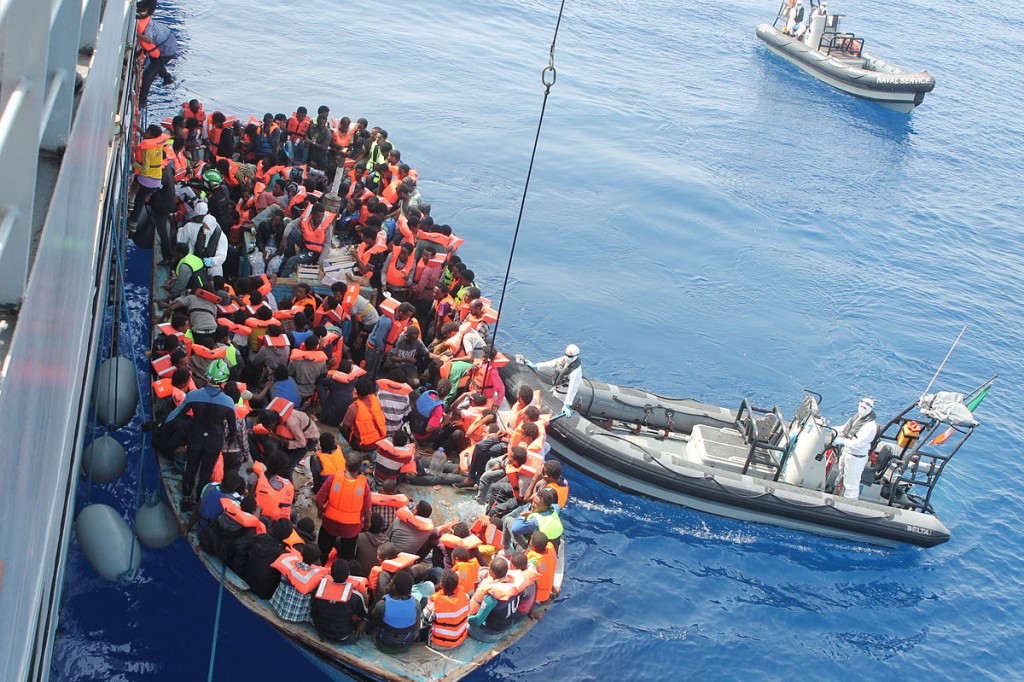Refugee Crisis by the Numbers
137,00 — the number of refugees the United Nations High Commissioner for Refugees (UNHCR) estimates have travelled across the Mediterranean Sea to Europe, from January 2015 to July 2015.
1,867 — the number of refugees and migrant missing persons or deaths at sea, from January 2015 to July 2015 alone.
83% — the increase in refugees and migrants crossing the Mediterranean in the first six months of 2015.
2015 has been a particularly taxing and crucial year for migrants and refugees, as many make perilous journeys across the Mediterranean Sea to Europe. They seek protection from war and persecution in their home countries. But while the figures for refugee and migrant travel are staggering, these numbers are only a fraction of the number of displaced persons worldwide. People have called this the worst humanitarian crisis since World War II.

Photo courtesy of The Austrian Ministry for European and International Affairs
The UNHCR makes a distinction between refugees and migrants, defining migrants as people who “choose to move in order to improve the future prospects of themselves and their families,” and refugees as those who “have to move if they are to save their lives or preserve their freedom. They have no protection from their own state – indeed it is often their own government that is threatening to persecute them. If other countries do not let them in, and do not help them once they are in, then they may be condemning them to death — or to an intolerable life in the shadows, without sustenance and without rights.” Migrants and refugees moving inside their home country are called internally displaced persons (IDP). Under the UNHCR definition, IDPs are similar to refugees except that “IDPs have not crossed an internationally recognized national border to find sanctuary.” As a result, IDPs “remain under the protection of their governments, even if the government is the cause of their displacement.”
The people making the journey across the Mediterranean Sea are mostly Syrian, Afghani, or Eritrean refugees traveling to Italy or Greece. Syrians, forced to flee because of war, have previously taken refuge in neighboring countries, such as Turkey and Lebanon. But conflicts erupting in these countries make it harder to support the waves of migrants entering their countries. Ambassador Lewis Lukens, current Diplomat in Residence at University of California, Berkeley, former US Ambassador to Senegal and Guinea- Bissau and former Consul General in Vancouver, B.C., suggests that part of the reason the migrant crisis has escalated so quickly and in such great proportions in 2015 alone, is technology. He says that the growing influence of social media and the global availability of technology has allowed the problem to become a more pressing international issue, forcing it to front-page headlines.
The question of who accepts responsibility for these refugees has caused dissension among the members of the European Union (EU). In a press release, Jean-Claude Juncker, President of the European Commission (executive branch of the EU), states “Now is not the time to take fright. It is time for bold, determined and concerted action by the European Union, by its institutions and by all its Member States.”
Currently, the European Union is working to alleviate the migrant pressure on nations such as Italy and Greece, by proposing the Migrant Quota System. This system would require all EU nations to share the burden of hosting refugees by creating quotas for the number of migrants which each country has to accept. Italy is one of the most outspoken supporters of this short term solution, which accounts for the distribution of over 160,000 migrants in Europe.
On September 14, an emergency meeting in Brussels resulted in Europe Union governments putting a stall on this plan. Carsten Nickel, a senior vice president at a political risk consultant firm told The New York Times, “A mandatory quota for the E.U.-wide relocation of migrants is unlikely to be achieved quickly, if at all.”
The United States has recently taken on a larger role in this international humanitarian crisis. In the past, America has not hosted large numbers of refugees migrating across the Mediterranean Sea to Europe, despite having the space, but has provided over $4.5 billion in humanitarian aid since the start of the Syrian Civil War in 2011. On September 20, 2015, Secretary of State John Kerry announced that the Obama Administration plans to drastically increase its intake of refugees in the coming years. The US will accept 85,000 refugees in fiscal year 2016, which starts in October 2015, and 100,000 refugees in fiscal year 2017, compared to the current cap of 70,000. Many of the additional refugees would come from Syria, a country ravaged by an oppressive government and civil war. “This step that I am announcing today, I believe, is in keeping with the best tradition of America as a land of second chances and a beacon of hope,” Kerry stated. “And it will be accompanied by additional financial contributions to the humanitarian effort, not only from our government but from the American people.”
Ambassador Lukens says that “a benefit of having open borders to refugees is that they bring innovation and spirit. Historically, immigrants havebeenapartofwhoweare as Americans, and contribute hugely to society.”
Key Migrations
- Over 140,000 ethnic Rohingya — a minority Muslim group — have fled Myanmar and landed in Thailand, Malaysia, and Indonesia since 2012 — Reuters.
- 70,000 migrants make their way across the Balkans, moving into Serbia and Macedonia —The Guardian
- 7.6 million internally displaced Syrians
are fleeing to Turkey, Lebanon, Jordan, Egypt, and Iraq — Mercy Corps - 137,000 people have migrated across the Mediterranean Sea this year —The New York Times
- There are over 860,000 refugees, asylum seekers, or IDPs inside Ukraine, many seeking to flee to Russia — UNHCR





